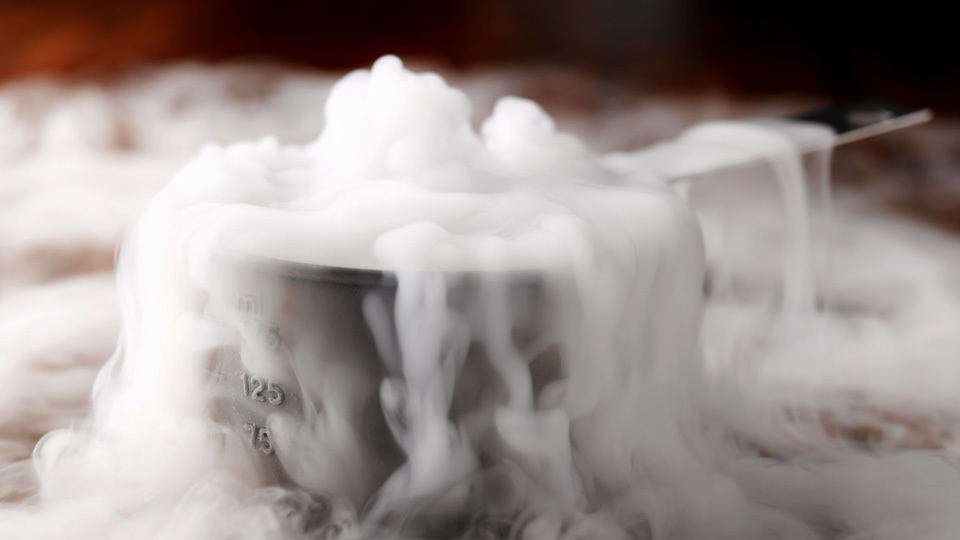States of Matter
There are 3 states of matter; Solids, liquids and gases. We can observe these states in pure liquid water. The water is liquid in room temperature at standard atmospheric pressure. If the water is placed in a freezer with temperature below 0°C the water turns solid; into ice. If the water is boiled in a kettle, the resulting steam will be produced. The steam is better to be called water vapor. This is  transparent but because it condenses, as it comes out of the kettle into the low temperature environment, it forms small clouds.
transparent but because it condenses, as it comes out of the kettle into the low temperature environment, it forms small clouds.
Each state of matter is different in property. These properties are clearly shown by their physical features. The states of matter are changed physically and not chemically.
Kinetic Particle Theory
Each matter has particles grouped together. Each particle has a similar mass and size. In solids, the particles are arranged close together and form a definite shape of a solid. They have a very strong force of attraction between them and have a low amount of kinetic energy. Although they lack large amount of kinetic energy, the particles still vibrate about their positions. The particles collide with each  other to transfer or gain energy. This is the case with liquids and gases. This is the reason the solids:
other to transfer or gain energy. This is the case with liquids and gases. This is the reason the solids:
- The solids cannot be poured off.
- The solids are not compressed easily.
- Most solids don’t change their shape.
Liquids have loosely packed particles. These particles are not completely free to move but they do have spaces between them. The particles have a greater kinetic energy than a solid and have weaker force of attraction between each particle compared to solids. The Liquids are:
- The liquids can be poured off.
- The liquids change their shape as they take the shape of its container.
- Liquids are not easily compressed like solids.
Gases have particles which are further apart from each other. These have very weak force attraction between each molecule and have a great amount of kinetic energy. This is why the particles move further apart from each other. Most gases are invisible while others are not. This explains that gases are:
- Gases can be poured off.
- Gases are easily compressed.
- Gases change there shape as they take the shape of its container.
Conversion between States of Matter
The states of matter can be converted. This revolves around melting, boiling, cooling and freezing. A solid is melted to form a liquid. The liquid is then heated to produce the gas water vapor. This is because the particles gain heat energy and convert it into kinetic energy. The kinetic energy is then used to vibrate about their position. This weakens the force of attraction between the particles causing the mass to change its state.
In case of cooling, lowering the temperature lowers the amount of heat energy converting into kinetic energy causing the particles to loose their energy. This causes the force of attraction between the particles to strengthen, which slowly forms a liquid and in turn a solid.
We can make a graph of these changes.

The graph clearly shows that as a solid is heated, its particles gradually convert the heat energy into kinetic energy from point A to point B and from Point B to point C, the solid is slowly melting. It is in a solid-liquid state. This shows that it takes some time to heat up. Then the solid completely turns into a liquid and the liquid also slowly raises its kinetic energy from point C to D. From point D to E the liquid is in a liquid-gas state, it is gradually turning into a gas. From E to F the temperature of gas is rising. If the gas is trapped in a container then the gas will continue to heat up, but if the gas is released to the atmosphere then the temperature will not increase as the gas particles are lost.
These changes in state also depend upon the purity of a substance. An impure substance may result in a lower melting point and a higher boiling point which can be harmful for experiments. This can also be used to learn the purity of a substance.
Evaporation
Evaporation is the conversion of liquid into gas below its boiling point. Evaporation can occur at any temperature below the boiling point, but the warmer the air the higher the rate of evaporation. A volatile liquid is an impure substance. If you pure any harmless volatile liquid, such as petrol, on your skin, it will quickly evaporate and the surface from which it is evaporated will remain cool.
Sublimation
Sublimation is the process of conversion of solid into gas(by warming) directly without turning into liquid. The process by which a gas is converted (by cooling) into solid is also called sublimation and this is a reversible process. Carbon Dioxide is a good example of this. Carbon dioxide is a gas which is cooled to become the dry ice. The dry ice is then sublimed to become Carbon Dioxide gas.
With that I end today’s article.
